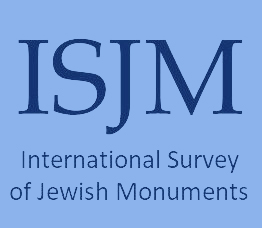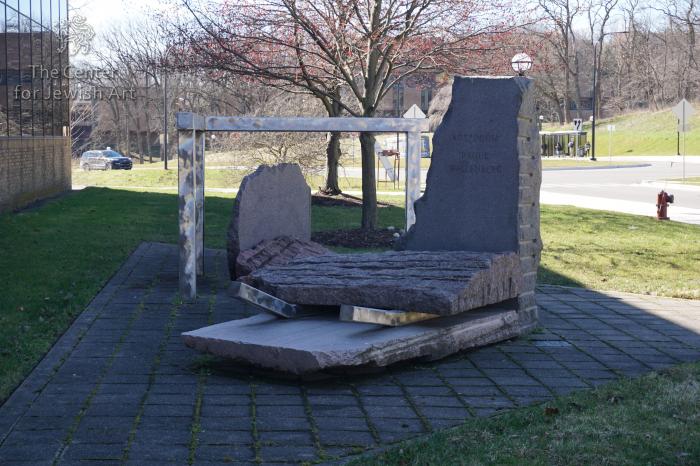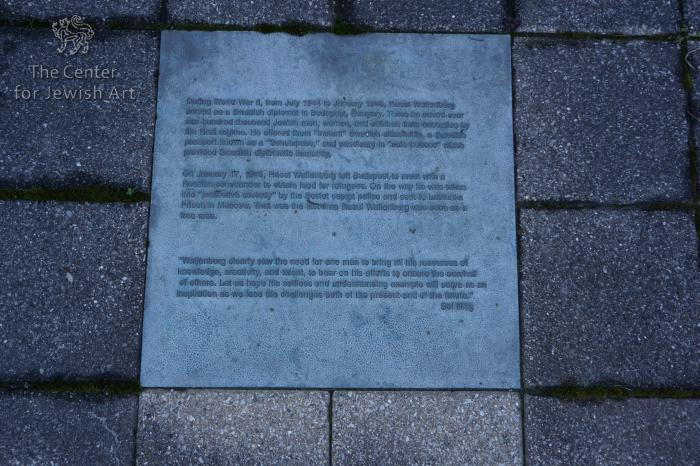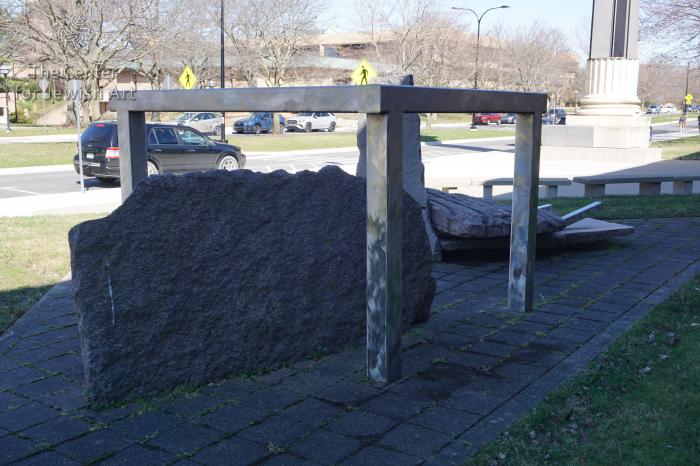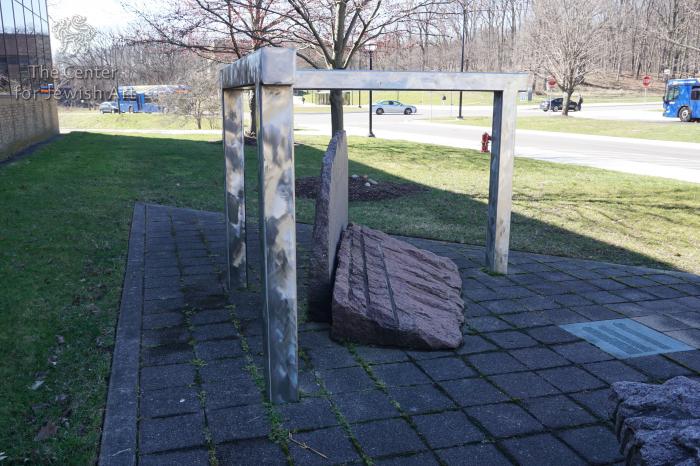Obj. ID: 53431 Köszönöm Raoul Wallenberg Monument, Ann Arbor, MI, USA, 1995

Name of Monument
Köszönöm Raoul Wallenberg Monument [Thank you Raoul Wallenberg]
What/Who is commemorated
Raoul Wallenberg
Description
The monument is situated at the entrance to the Arts and Architecture Building (built 1971) on the North Campus of the University of Michigan.
An equilateral triangle is the foundation of a sculptural group made up of huge granite stones and stainless steel. On the left side, the is a composition of three granite blocks: one lying on the ground, another one standing, and the third one lying on two steel rails. The standing block dears an inscription in Hungarian, "Thank you Raoul Wallenberg."
The composition on the right consists of two granite blocs, one lying and one standing, and a steel construction delineating a triangular space. The standing block bears the inscription "One person can make a difference."
Three bronze plaques with English inscriptions are placed on the ground.
According to Schult, "the ensemble on the left is meant to symbolize the destruction of wartime Budapest while the framework of stainless steel over granite stones on the right is a metaphor for the shelter provided by the Swedish safe houses" (p. 331).
Inscriptions
On the tallest stone, in Hungarian:
Köszönöm
Raoul
Wallenberg
translation: Thank you Raoul Wallenberg
On the horizontal stone, in English:
One person can make a difference
On the first bronze plaque, in English:
Köszönöm Raoul Wallenberg
Thank you Raoul Wallenberg
Jon Rush, sculptor
Dedicated by Ambassador
Per Anger
October 26, 1995
Gift of the Sol King Family
and the Sculptor
On the second bronze plaque, which is closest to the entrance to the buildings in English:
A Memorial
to
Raoul Wallenberg, ’35
Given in memory of
Sol King, ’34
Classmates
Friends and humanitarians
On the third plaque, in English:
During World War II, from July 1944 to January 1945, Raoul Wallenberg
served as a Swedish diplomat in Budapest, Hungary. There he saved over
one hundred thousand Jewish men, women, and children from execution by
the Nazi regime. He offered them “instant” Swedish citizenship, a Swedish
passport known as a “Schutzpass,” and sanctuary in “safe houses” which
provided Swedish diplomatic immunity.
On January 17, 1945, Raoul Wallenberg left Budapest to meet with a
Russian commander to obtain food for refugees. On the way he was taken
into protective custody by the Soviet secret police and sent to Lubianka
Prison in Moscow. That was the last time Raoul Wallenberg was seen as a
free man.
“Wallenberg clearly saw the need for one man to bring all his resources of
knowledge, creativity, and talent, to bear on his efforts to ensure the survival
of others. Let us hope his selfless and understanding example will serve as an
inspiration as we face the challenges both of the present and of the future.”
Sol King
Commissioned by
The University of Michigan, Jon N. Rush, and the Sol King Family
| Arts and Architecture Bldg., North Campus, The University of Michigan, 2000 Bonisteel Blvd, Ann Arbor, MI 48109
The tallest stone’s height – 2 m
Steel construction’s height – 1.7 m
The name of the sculptor appears on the first bronze plaque.
The concept of a monument to honor Raoul Wallenberg in the University of Michigan where he studied architecture from 1931 to 1935, originated with a letter that Jon Rush wrote in 1975 (Schult, p. 189-90, 332).
The work on the monument started in 1992. The sculpture was financed by the family of Sol King, who studied with Wallenberg and from 1958 to 1975 was the president of Albert Kahn Associates. The sculptor, Jon N. Rush, donated his services and the granite stones.
The sculpture was unveiled on October 26, 1995 by Per Anger, a Swedish diplomat who co-worked with Wallenberg at the Swedish legation in Budapest, 60 years after Wallenberg’s graduation from the School of Art and Architecture at the University of Michigan and 50 years after his disappearance and the end of World War II.
According to Schult, the original second bronze plaque was replaced because it stated that the memorial was dedicated to Sol King in memory of Raoul Wallenberg, and vice versa (p. 331). The University of Michigan financed the replacement of the plaque (p. 332).
Schult, Tanja, A Hero’s Many Faces: Raoul Wallenberg in Contemporary Monuments. (New York: Palgrave Macmillan, 2012), pp. 189-196, 331-333.



